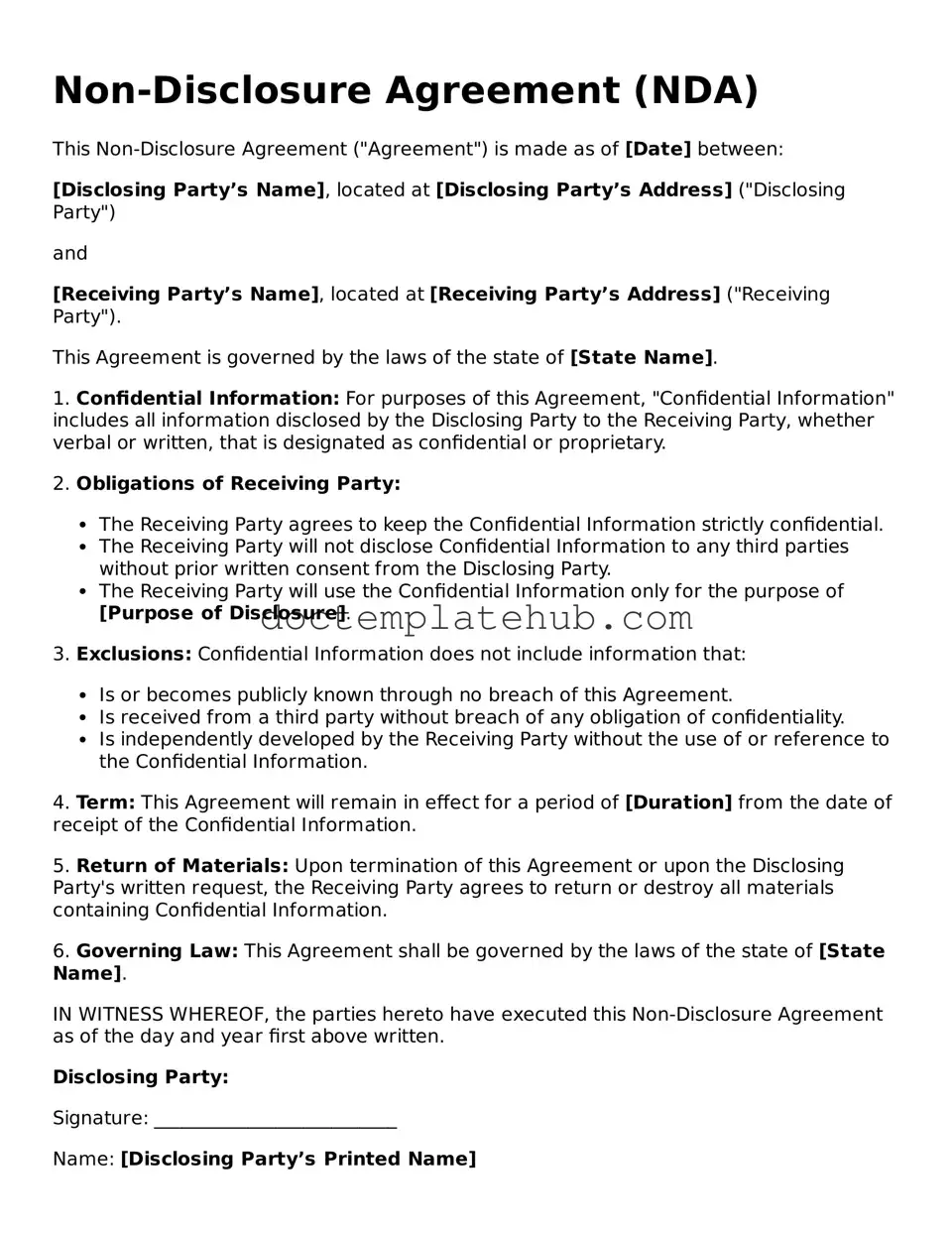What is a Non-disclosure Agreement (NDA)?
A Non-disclosure Agreement (NDA) is a legal contract that establishes a confidential relationship between parties. It protects sensitive information shared between them, ensuring that the information remains private and is not disclosed to unauthorized individuals or entities.
When should I use an NDA?
An NDA should be used whenever sensitive information is exchanged, such as during business negotiations, partnerships, or collaborations. It is particularly important in industries where proprietary information, trade secrets, or intellectual property is involved.
What types of information can be protected by an NDA?
NDAs can protect a wide range of information, including business plans, financial data, customer lists, marketing strategies, and technical specifications. Essentially, any information that is not public knowledge and provides a competitive advantage can be covered by an NDA.
Are NDAs enforceable in court?
Yes, NDAs are generally enforceable in court, provided they are well-drafted and comply with state laws. If one party breaches the agreement, the other party may seek legal remedies, including damages or injunctive relief to prevent further disclosure.
How long does the confidentiality obligation last?
The duration of the confidentiality obligation can vary. Many NDAs specify a time frame, such as two to five years, after which the information may no longer be considered confidential. Some agreements may even extend indefinitely, especially for trade secrets.
Can an NDA be mutual?
Yes, an NDA can be mutual, meaning both parties agree to protect each other's confidential information. This is common in situations where both parties will share sensitive information during their interactions.
What happens if I breach an NDA?
If you breach an NDA, you may face legal consequences, including financial damages or injunctions. The injured party may also seek to recover any losses incurred due to the breach. It is crucial to understand the terms of the NDA to avoid unintentional violations.
Can I negotiate the terms of an NDA?
Absolutely. NDAs are negotiable documents. Parties can discuss and amend terms, such as the scope of confidentiality, duration, and obligations. It is advisable to consult with a legal professional to ensure the final agreement meets your needs.
Is it necessary to have a lawyer review my NDA?
While it is not strictly necessary, having a lawyer review your NDA is highly recommended. A legal professional can ensure that the agreement is enforceable, clearly written, and adequately protects your interests.
Can I use a template for my NDA?
Yes, using a template can be a good starting point for creating an NDA. However, it is essential to customize the template to fit your specific situation and needs. Consulting with a legal expert can help tailor the document appropriately.
